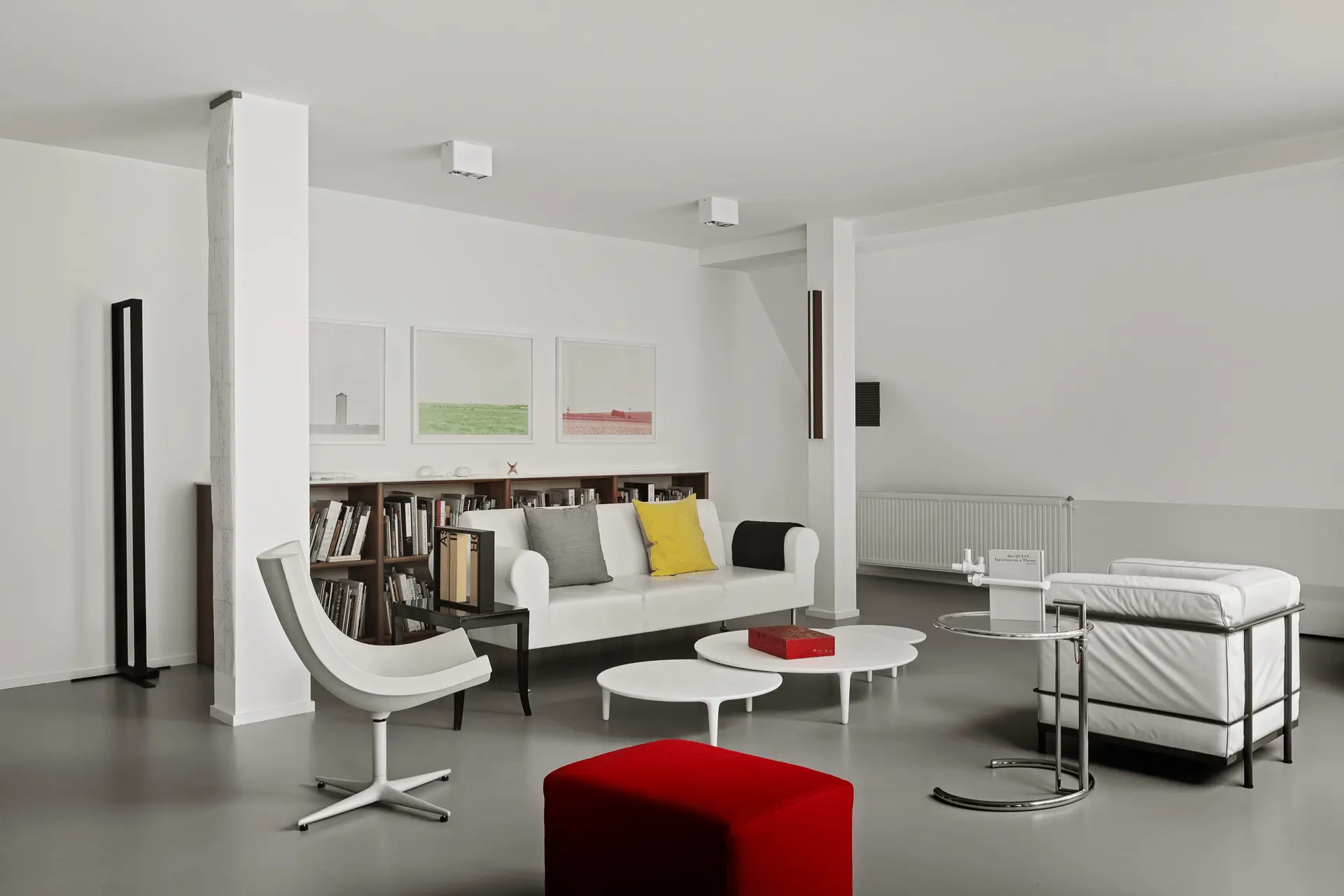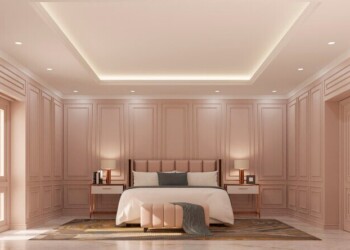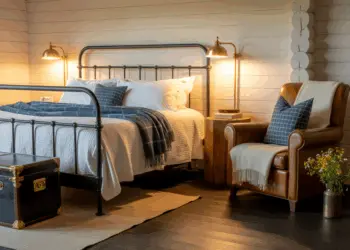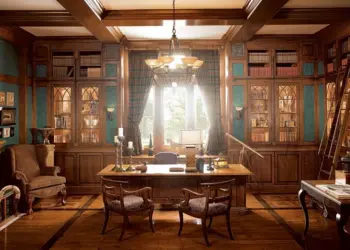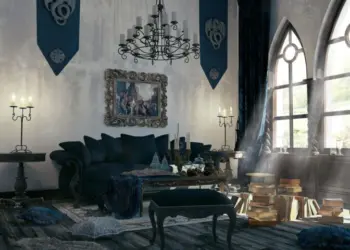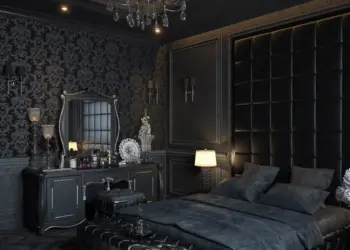In the ever-evolving world of interior design, certain trends stand the test of time, and one such trend is the Bauhaus movement. Born in the early 20th century, Bauhaus design has left an indelible mark on the world of aesthetics and functionality. In this article, we will explore the enduring appeal of Bauhaus interior trends, delving into its history, core principles, and how you can incorporate them into your living spaces. Get ready to embark on a journey where art, design, and functionality converge seamlessly.
Table of Contents
What is the Bauhaus Movement?
The Bauhaus movement originated in Germany in the aftermath of World War I. It was founded by Walter Gropius in 1919 and quickly gained recognition for its revolutionary approach to design and architecture. Bauhaus aimed to bridge the gap between art and industry, with a primary focus on merging form and function.
Bauhaus Interior Trends Principles: Form Follows Function
The core tenet of Bauhaus design can be summarized in the phrase “form follows function.” This means that every element of a design should serve a purpose and be aesthetically pleasing simultaneously. In Bauhaus interiors, you’ll find minimalist and clean lines, devoid of unnecessary ornamentation.
Simplicity and Minimalism
Bauhaus interiors are celebrated for their simplicity. Walls are often white or neutral, allowing the furniture and decor to take center stage. Clean lines and geometric shapes define the furniture, emphasizing practicality and functionality.
Bold Use of Color
While Bauhaus interiors favor simplicity, they are not devoid of color. Primary colors such as red, blue, and yellow are often used to create vibrant accents. These colors are strategically placed to draw attention and create a visually stimulating environment.
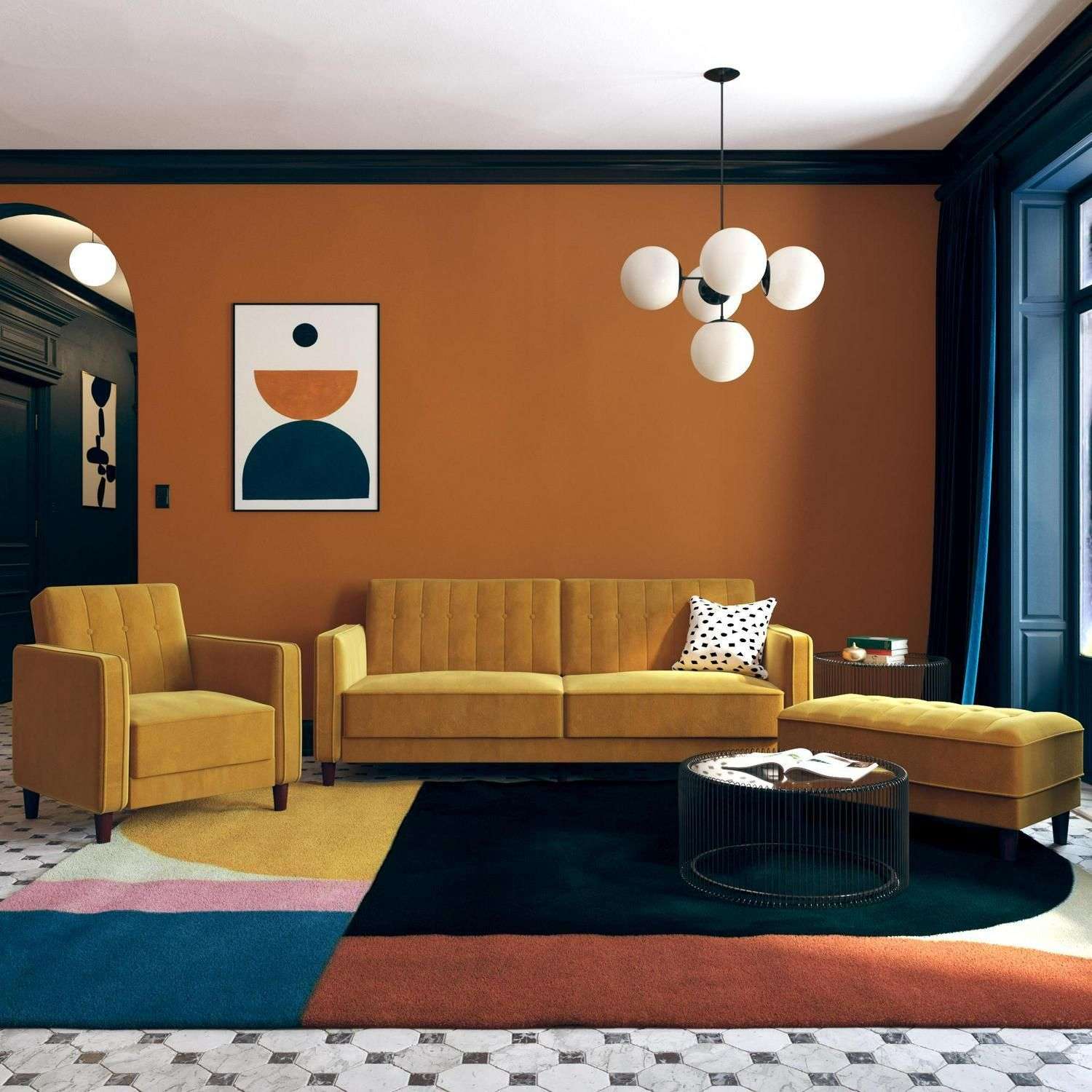
Bauhaus Interior Trends Furniture: Iconic Pieces
One of the most iconic aspects of Bauhaus interior design is its furniture. Several pieces have become timeless classics that are still in production today. Here are a few notable examples:
Wassily Chair
Designed by Marcel Breuer, the Wassily Chair is a testament to the use of tubular steel and leather. Its sleek lines and distinctive form make it an enduring symbol of Bauhaus design.
Barcelona Chair
Created by Ludwig Mies van der Rohe, the Barcelona Chair is an epitome of elegance and comfort. Its clean, geometric lines and tufted leather upholstery make it an instant focal point in any room.
Eames Lounge Chair and Ottoman
Although not directly from the Bauhaus school, the Eames Lounge Chair and Ottoman by Charles and Ray Eames share the movement’s ethos of form following function. This chair has become an emblem of mid-century modern design.
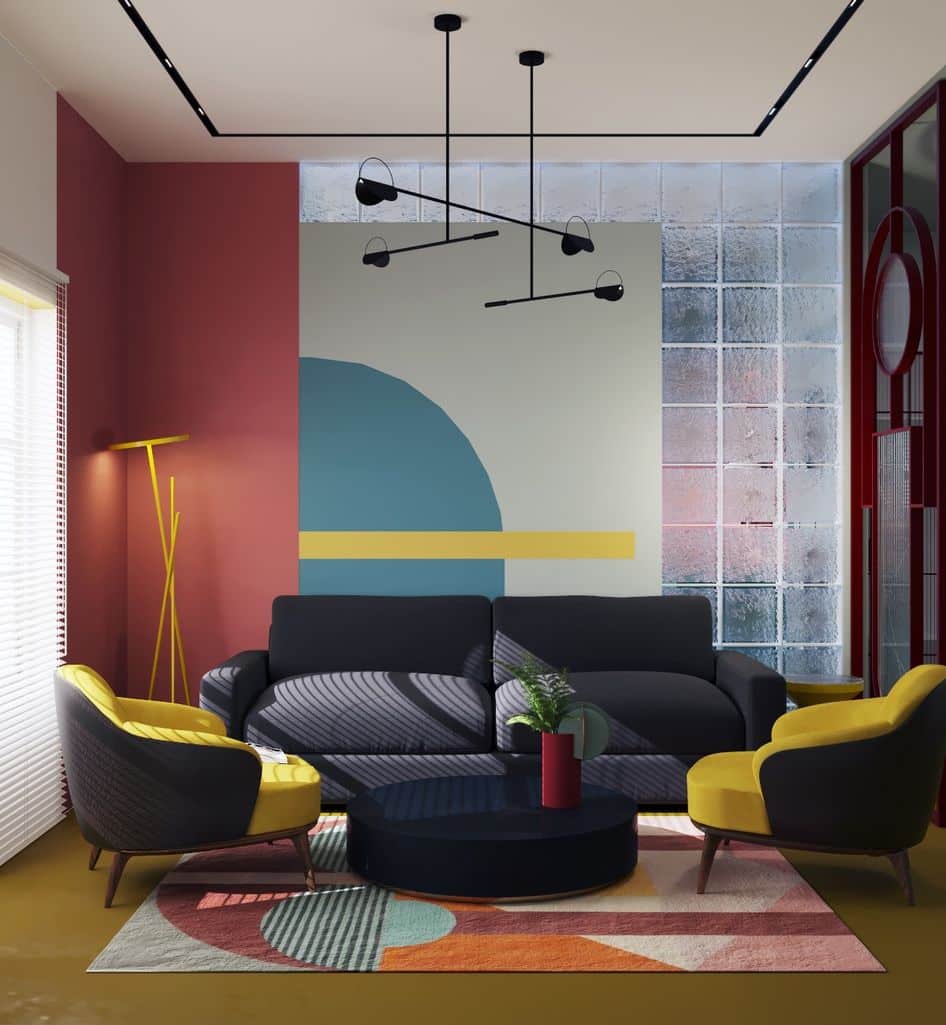
Incorporating Bauhaus Interior Trends into Your Home
Now that we’ve explored the essence of Bauhaus design, let’s discuss how you can infuse this style into your home.
Embrace Minimalism
Start by decluttering your living spaces. Remove excessive decor and keep only the essentials. Opt for simple, functional furniture pieces with clean lines.
Use Primary Colors Sparingly
Introduce pops of primary colors strategically. You can achieve this through artwork, cushions, or small pieces of furniture. Remember, less is more in Bauhaus design.
Invest in Bauhaus-Inspired Furniture
If you’re looking to make a bold statement, consider investing in Bauhaus-inspired furniture. Pieces like the Wassily Chair or Barcelona Chair can become the focal point of a room.
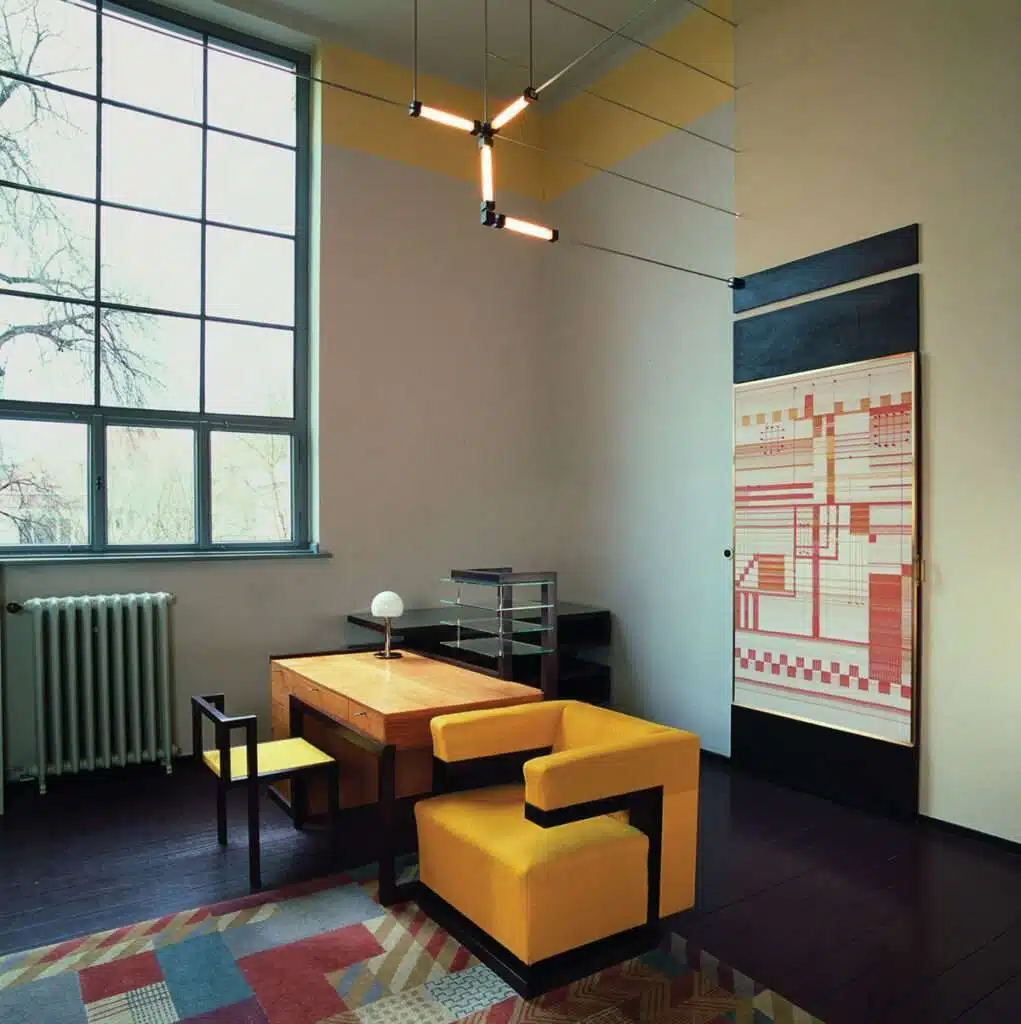
Bauhaus interior trends Lighting: Illuminating Design
Lighting plays a crucial role in Bauhaus interior design. Just like furniture, Bauhaus-inspired lighting fixtures are known for their functionality and aesthetic appeal.
Bauhaus Pendant Lights
Bauhaus pendant lights are a popular choice for modern interiors. These fixtures feature geometric shapes and clean lines, often made from materials like metal and glass. They provide both ambient and task lighting, adding a touch of elegance to any room.
Wall Sconces
Wall sconces in the Bauhaus style are minimalist and practical. They can be used to highlight specific areas or artworks while maintaining the overall simplicity of the design.
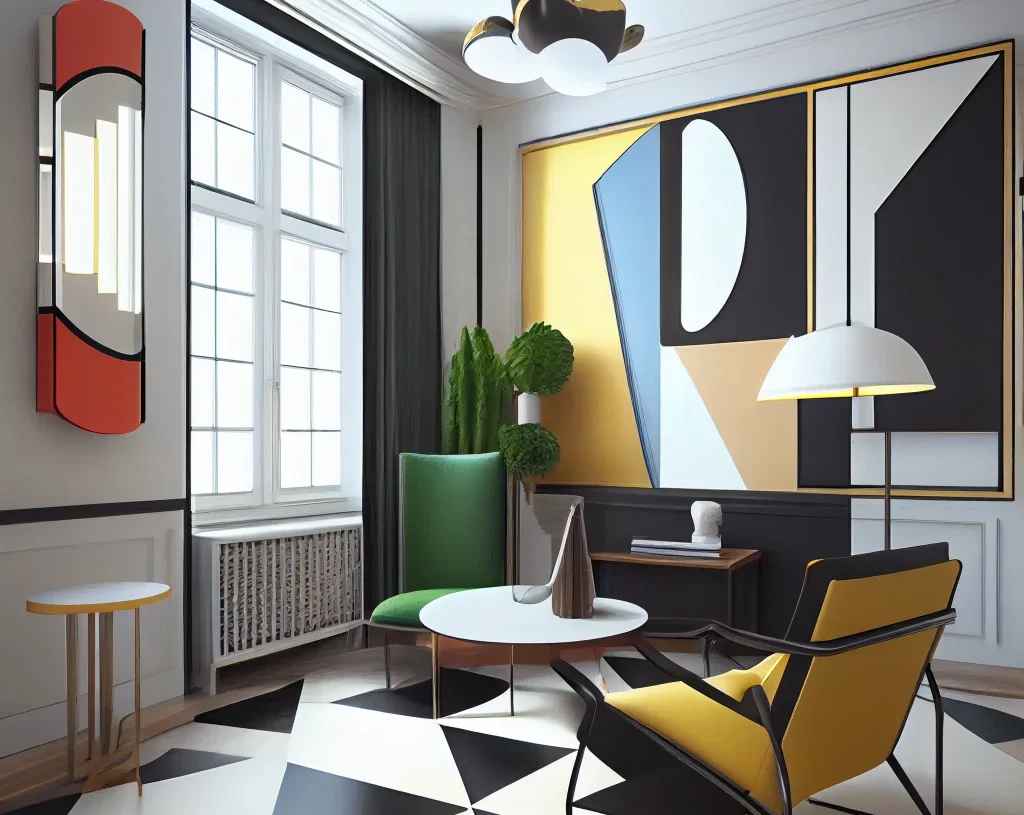
Bauhaus Interior Trends In Art: Expressing Creativity
Bauhaus design extends beyond furniture and lighting; it also encompasses various forms of art. Here are some ways you can incorporate Bauhaus-inspired art into your living spaces.
Bauhaus Prints
Adorn your walls with Bauhaus-inspired prints and artwork. Look for pieces that feature geometric patterns, primary colors, and abstract shapes. These prints can serve as focal points, enhancing the overall aesthetic.
Textile Art
Bauhaus textiles are characterized by bold patterns and primary colors. Consider adding Bauhaus-inspired cushions, curtains, or rugs to infuse your space with a touch of Bauhaus creativity.
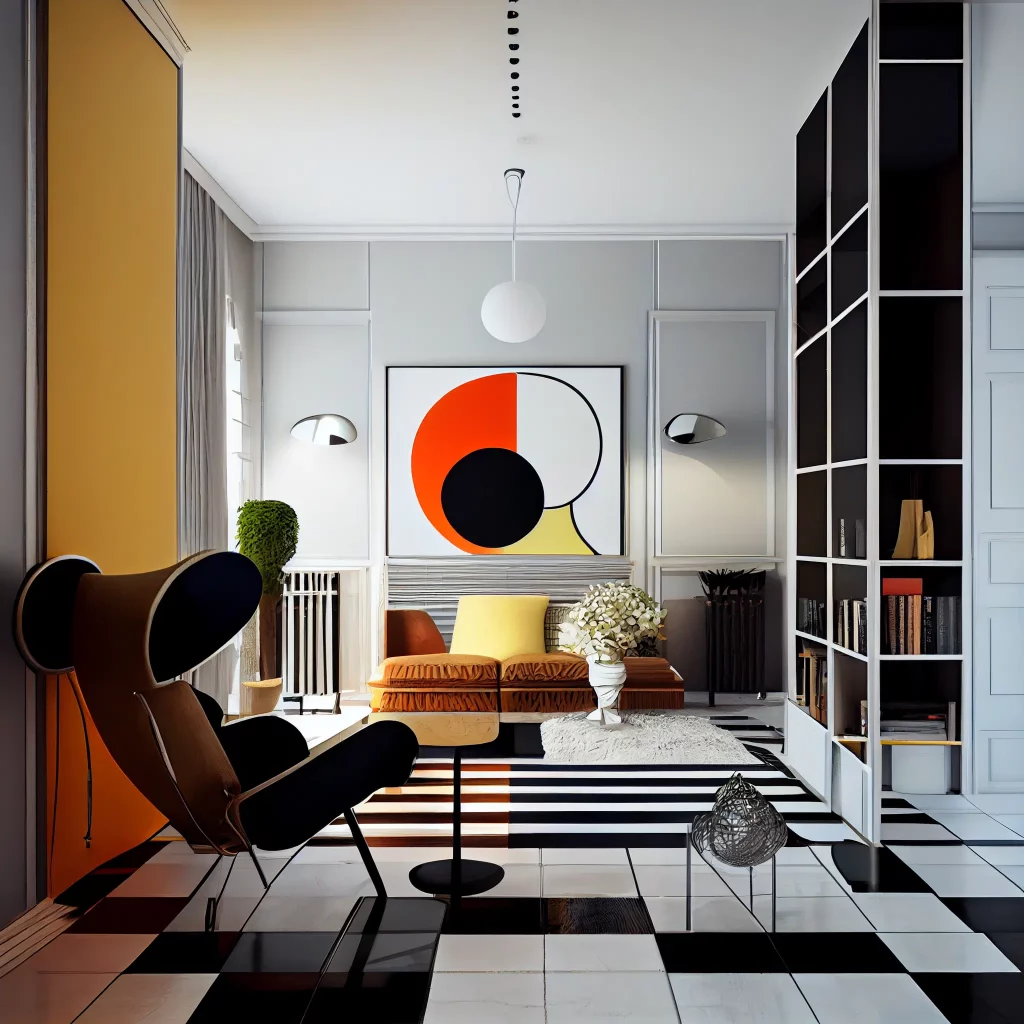
Bauhaus Interior Trends In Kitchen and Dining
Don’t forget about your kitchen and dining areas when embracing Bauhaus interior trends. Here’s how you can apply the principles to these spaces.
Minimalist Kitchen Cabinets
Opt for sleek and minimalist kitchen cabinets with clean lines. White or monochromatic color schemes work well, creating a clutter-free and functional cooking space.
Bauhaus-Inspired Tableware
Choose tableware and dining sets that reflect Bauhaus aesthetics. Look for dinnerware with geometric patterns and primary colors. These details can elevate your dining experience.
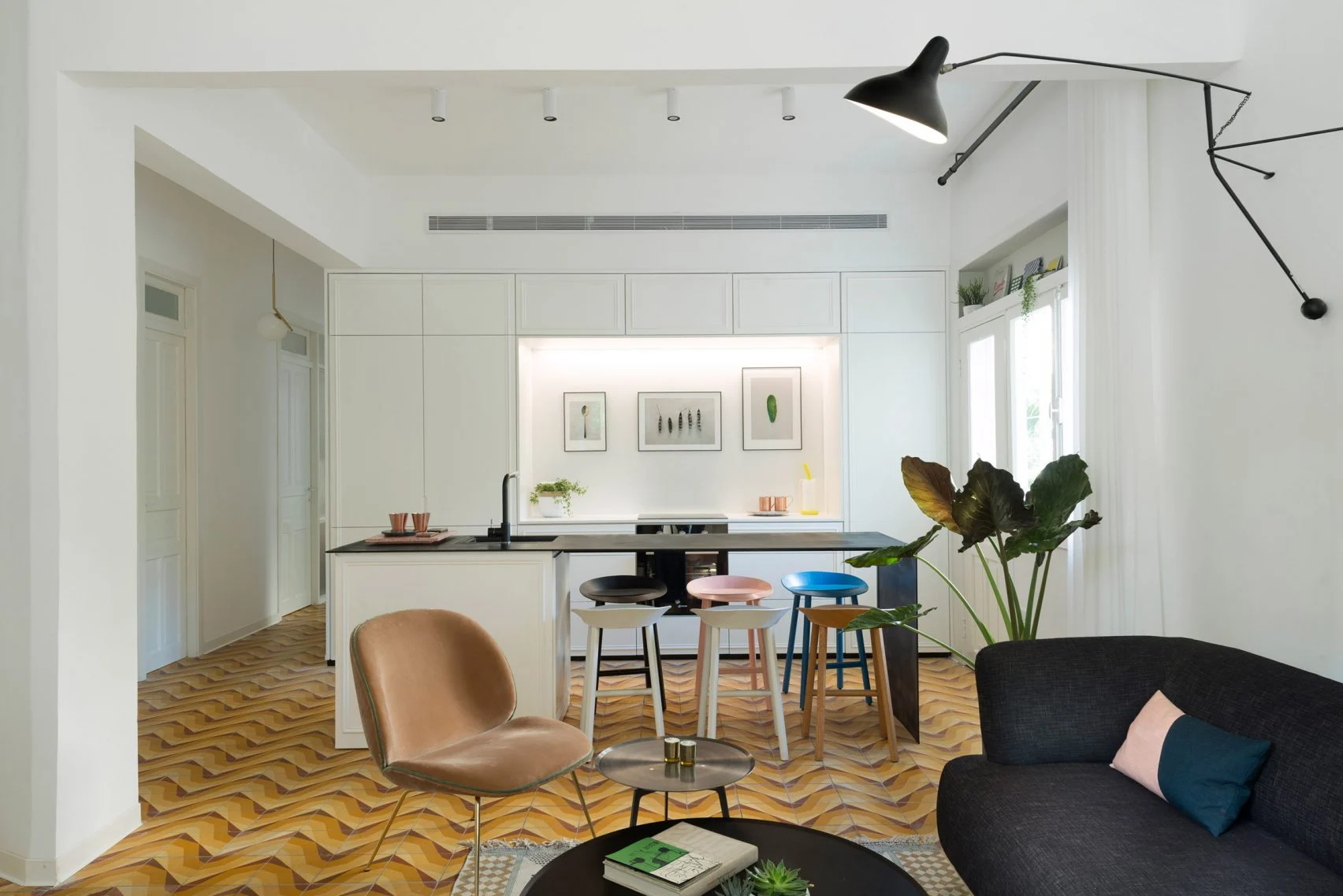
Bauhaus Interior Trends in the Bedroom
Transform your bedroom into a tranquil retreat by incorporating Bauhaus elements.
Bed Frames in bauhaus interior trends
Select a bed frame that adheres to Bauhaus principles. Minimalist bed frames with leather or fabric upholstery can add a touch of luxury and sophistication.
Bauhaus interior trends Bedding
Complete the look with Bauhaus-inspired bedding. Opt for sheets and duvet covers in primary colors or with geometric patterns to maintain the design theme.
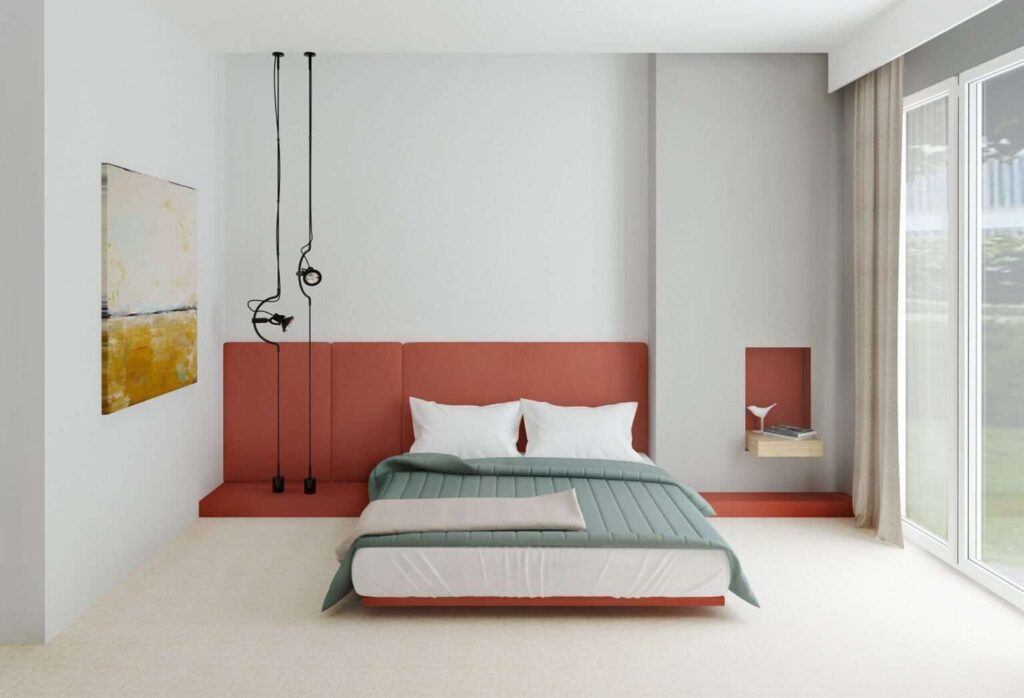
The Home Office Bauhaus Interior Trends
With the rise of remote work, home offices have become an essential part of our living spaces. Embrace Bauhaus principles to create a productive yet aesthetically pleasing workspace.
Minimalist Desk
Select a minimalist desk with ample workspace and storage solutions. Keep the desk clutter-free to maintain the Bauhaus aesthetic while ensuring a conducive work environment.
Ergonomic Chairs
Invest in an ergonomic chair that combines comfort and Bauhaus-inspired design. The chair should promote proper posture while fitting seamlessly into your home office’s style.
Bauhaus Outdoors
Extend Bauhaus design to your outdoor spaces, creating a seamless transition from inside to outside.
Bauhaus Garden Furniture
Choose outdoor furniture that aligns with Bauhaus aesthetics. Metal or wooden pieces with clean lines and simplicity can create a harmonious outdoor environment.
Maintaining the Bauhaus Interior Trends
To keep the Bauhaus spirit alive in your home, here are some additional tips:
Artwork Rotation
Regularly update your artwork and decor to keep your space fresh and in line with evolving Bauhaus trends.
Sustainability
Consider sustainable and eco-friendly materials when renovating or furnishing your home. Bauhaus design’s emphasis on functionality aligns well with sustainable choices.
Flexibility
Adapt your interiors as your needs change. Bauhaus design, with its focus on function, allows for easy reconfiguration.
Continuous Exploration
Stay updated with contemporary interpretations of Bauhaus design. Explore new ideas, materials, and furniture pieces to keep your home fresh and inspired.
Personal Expression
While Bauhaus design is known for its minimalism, don’t be afraid to inject your personality into your space. Incorporate personal touches through decor, photographs, and artwork that resonate with you.
In a world where design trends come and go, Bauhaus interior trends remain a testament to the enduring appeal of functional and aesthetic design. By embracing the principles of simplicity, minimalism, and bold use of color, you can create living spaces that are both visually captivating and highly functional. Whether you’re revamping your entire home or just a single room, Bauhaus design offers a timeless and versatile framework for creating spaces that truly stand out.
FAQs
What is a Bauhaus interior?
A Bauhaus interior refers to a design style that prioritizes simplicity, clean lines, and the use of industrial materials to create functional and aesthetically pleasing spaces.
What are the characteristics of Bauhaus interior design style?
Characteristics include minimalistic furniture, geometric shapes, an emphasis on functionality, use of primary colors, and a rejection of unnecessary ornamentation.
Is Bauhaus design suitable for small living spaces?
Absolutely! Bauhaus design’s focus on simplicity and functionality makes it perfect for small spaces, as it helps maximize the available room.
Can I mix Bauhaus with other design styles?
Certainly! Bauhaus design is versatile and can be combined with other styles to create a unique and eclectic look.
Are Bauhaus-inspired furniture pieces expensive?
Some Bauhaus-inspired furniture can be pricey, but they are often considered investments due to their enduring appeal and quality craftsmanship.
What are some DIY ways to incorporate Bauhaus elements into my home?
You can start by repainting your walls in neutral tones, creating Bauhaus-style artwork, and adding geometric shapes through decor and textiles.
Where can I find Bauhaus-inspired furniture?
You can explore furniture stores, both online and offline, that specialize in mid-century modern and Bauhaus-inspired pieces. Additionally, vintage shops may have authentic Bauhaus furniture.
What is the Bauhaus interior design trend?
The Bauhaus interior design trend is characterized by minimalism, functionality, and the use of geometric shapes. It originated from the Bauhaus school of design, emphasizing the fusion of art and functionality.
What are the Bauhaus colors for interior?
Bauhaus interiors often feature primary colors (red, blue, yellow) along with black and white. These colors are used boldly and sparingly to create visual impact and contrast.
